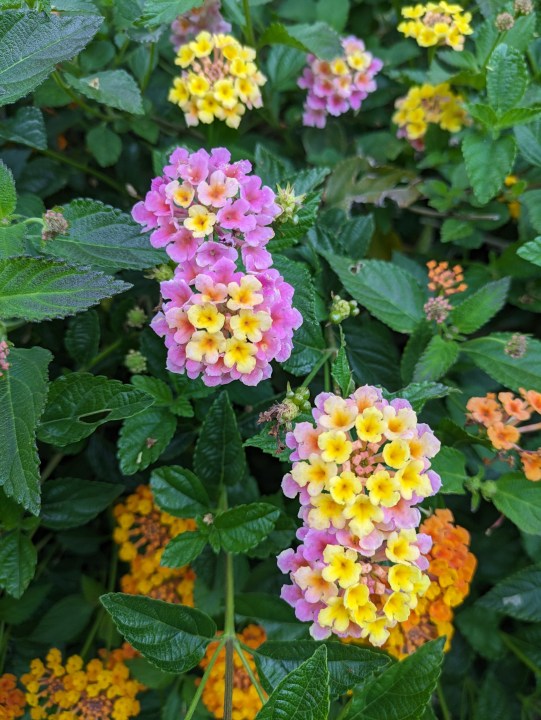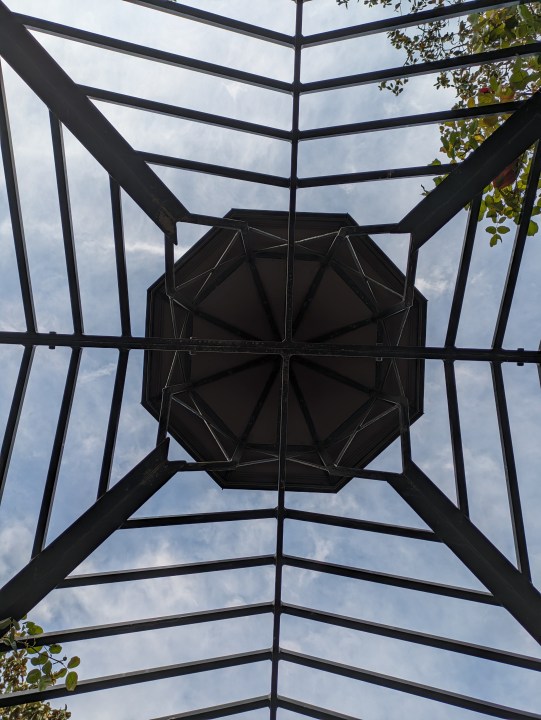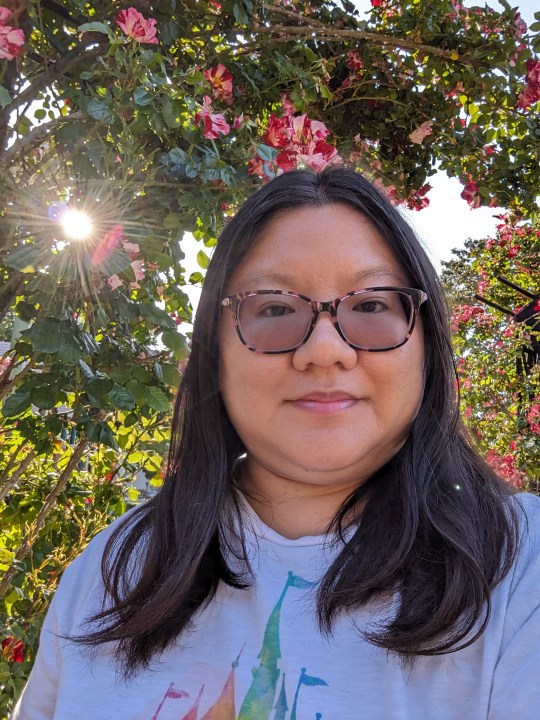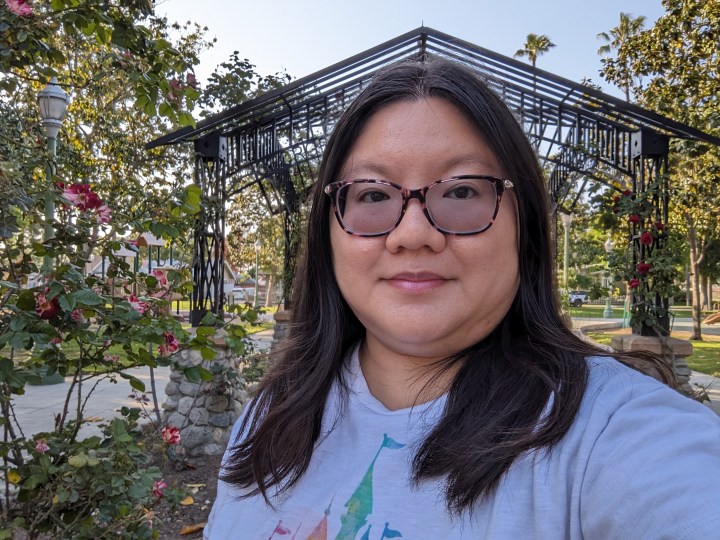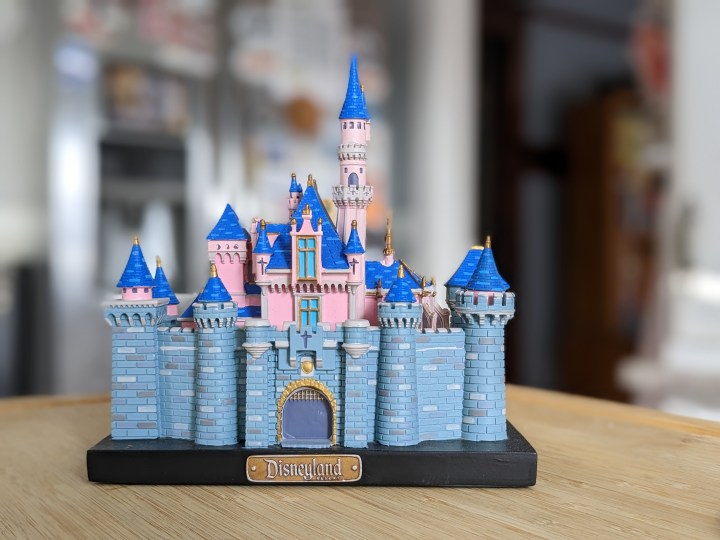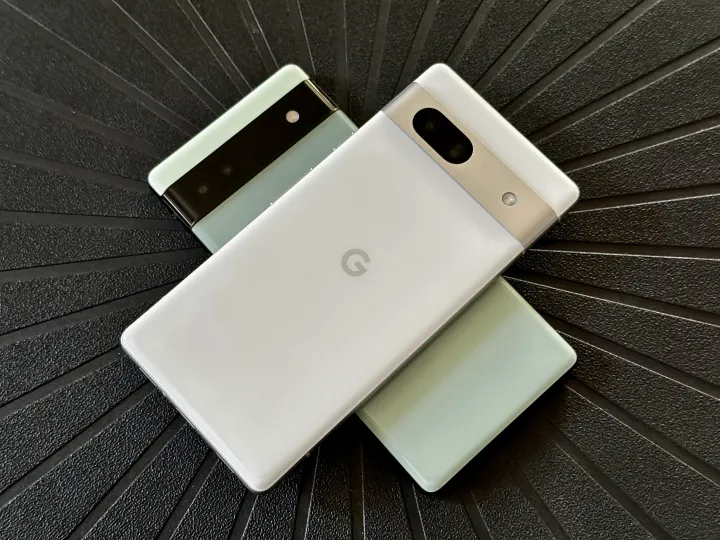
The Google I/O 2023 keynote has come and gone, and during that two-hour presentation, we got a slew of new Pixel products coming our way — including the new Pixel Fold and Pixel Tablet. Google also dropped the new Pixel 7a, which is the most affordable option of the Pixel 7 lineup.
But there was also one more thing — Google decided to keep the Pixel 6a around instead of discontinuing it. So if you want a true budget-friendly Pixel phone, then the Pixel 6a remains a terrific value.
Still, the Pixel 7a packs in some nice upgrades over its predecessor. This includes a slightly better display with a 90Hz refresh rate, a Tensor G2 chip, wireless charging, and a 64MP main camera. On paper, this looks like a very big jump from the Pixel 6a’s 12MP main camera lens, and if you’re just looking at the numbers, then yes! It’s quite a big jump.
But with Google’s reliance on computational photography with its Tensor chips, does the megapixel count even matter? Let’s take a look.
Google Pixel 7a vs. Pixel 6a: camera specs

Though the Pixel 6 series had 50MP main cameras, that’s nowhere to be found on the Pixel 6a. Instead, Google put in the older 12.2MP camera that it’s used since 2017 — featuring an f/1.7 aperture, optical image stabilization (OIS), and phase detection autofocus. You also get a 12MP ultrawide camera with a 114-degree field of view (FOV) and an 8MP selfie camera.
The Pixel 7a, however, lives up to being the most advanced Pixel A-Series yet. It has a 64MP main camera with an f/1.89 aperture, OIS, 80-degree FOV, and phase detection autofocus. The ultrawide camera is 13MP with a 120-degree FOV, and the selfie camera is 13MP with f/2.2 aperture and a fixed focus 95-degree ultrawide FOV.
Again, the specs for the Pixel 7a are certainly impressive when you’re just looking at the numbers. But during my tests, it turns out that the numbers really don’t matter. Why? Because it’s all about the computational photography magic Google’s so well-known for. After carefully looking at the images I took with both phones, it’s hard to really see any significant difference.
With good lighting, both main cameras are indiscernible
Despite the fact that the Pixel 7a has a 64MP main camera, as long as you have good lighting, the Pixel 6a’s 12.2MP wide camera also takes very good photos. In fact, it’s almost impossible to tell the difference between the Pixel 7a and Pixel 6a when it comes to most shots taken with the main cameras.
- 1. Pink-orange flower taken with Google Pixel 6a main camera
- 2. Pink-orange flower taken with Google Pixel 7a main camera
Since spring is in full bloom around here, I decided to take both phones out for some photos of the gorgeous flowers that are blooming in front of my home. This is a simple photo of a beautiful pinkish-orange flower in the rose garden. With a quick glance, you can’t really see the differences. The Pixel 6a version is a little softer on the details than the Pixel 7a, which lets you see the texture of the petals better, but that’s it. The bokeh effect is similar on both, and the color is vibrant and punchy but not overdone.
- 1. Bear’s breech plant taken with Google Pixel 6a main camera
- 2. Bear’s breech taken with Google Pixel 7a main camera
Let’s take another look at some pretty flora. This bush with purple and white flowers. Both images look good at first glance, but upon closer inspection, it seems that the Pixel 6a image has more of the spiky tips of the flowers in focus, especially the one in the center, whereas it doesn’t look as sharp on the Pixel 7a version. However, the trees in the background appear much softer in the Pixel 6a version, whereas they are more detailed on the Pixel 7a. But overall, both images are very good, and if you’re just sharing on social media, the differences are negligible.
- 1. Flower close-up taken with Google Pixel 6a main camera
- 2. Flower close-up taken with Google Pixel 7a main camera
Here’s a closeup shot of one of the more unique-looking blooms around here. Basically, both versions look indistinguishable from each other. The Pixel 7a image is a little more focused towards the center of the image, but otherwise, they’re pretty much the same exact image, even with the colors.
- 1. Metal canopy with sky taken with Google Pixel 6a main camera
- 2. Metal canopy with sky taken with Google Pixel 7a main camera
Lastly, here’s an image underneath a canopy in the rose garden, pointing up at the cloudy sky. Both phones captured the detail and texture of the metal structure well, though the Pixel 6a version shows more of the flaws and blemishes, which are harder to see on the Pixel 7a version. The Pixel 7a image also appears to be leaning a little warm, causing the sky to appear a tad washed out. In the Pixel 6a version, the overall tone is more cool, so the sky is bluer, the leaves are greener, and it’s more pleasing overall.
Winner: Draw
It’s time to go ultrawide
Similarly to the main cameras, the ultrawide camera on both the Pixel 7a and Pixel 6a are similar. I mean, there is only a one-megapixel difference, after all.
- 1. Rose garden taken with Google Pixel 6a ultrawide camera
- 2. Rose garden taken with Google Pixel 7a ultrawide camera
Both images are almost the same in this ultrawide shot of a rose garden at the park. But the Pixel 7a has the advantage of a wider field of view, which would be more useful if you were capturing a scenic landscape. However, the Pixel 7a version seems to have less detail with the trees in the background, as they look much darker than they are in the Pixel 6a image. Surprisingly, colors appear brighter with the Pixel 6a version with more detail and texture, especially if you zoom in. I’d imagine this is due to the smaller field of view on the Pixel 6a.
- 1. Park monument taken with Google Pixel 6a ultrawide camera
- 2. Park monument taken with Google Pixel 7a ultrawide camera
Again, in this ultrawide shot of the monument at the park, you can clearly see that the Pixel 7a has a wider field of view. Even with the monument itself, you can see more of the texture and detail in the Pixel 6a version over the Pixel 7a one, especially at the base. The grapes carved into the pillar also have more contrast, making it easier to see.
Winner: Pixel 6a
Smile for the selfie camera!
Whether we love them or hate them, we live in the age of the selfie. So, how do the selfie cameras on both budget Pixels hold up?
- 1. Flowery selfie taken with Google Pixel 6a
- 2. Flowery selfie taken with Google Pixel 7a
Even though the Pixel 6a only has an 8MP selfie camera, the resulting images look really good, all things considered. Though my face lacks some detail compared to the Pixel 7a’s 13MP version (it makes my face look smoother than it really is), and the background detail is soft, the overall quality looks nice and is fine when you just want a quick selfie. In the first selfie I have here, I actually prefer how the Pixel 6a handled the sun peeking through the plants, casting rays of light over my face. To my eyes, the effect looks cooler than how the Pixel 7a handled it.
- 1. Rose garden selfie taken with Google Pixel 6a
- 2. Rose garden selfie taken with Google Pixel 7a
This second selfie, which I took in horizontal orientation, also looks similar between both phones. Again, the Pixel 6a version is a little softer on details, but it looks close enough to the Pixel 7a version that you can’t really tell a difference.
The entire Pixel lineup seems to give mixed results regarding skin tone accuracy, and that holds true for both of these devices. The Pixel 6a seems to make me look washed out, but the Pixel 7a seems a little closer to reality. It also depends on lighting, but your results may vary here.
Winner: Pixel 6a
Take it a step further with portraits
We all love taking portrait-mode photos, right? When the subject is clearly in focus, but the background is heavily blurred with a bokeh effect, similar to what you can achieve with a DSLR? Though it’s primarily for people, many use portrait mode for inanimate objects and pets. It’s one of my favorite ways to shoot with camera phones, and both the Pixel 6a and Pixel 7a are pretty good with portrait shots — for the most part.
- 1. Disneyland castle figurine portrait taken with Google Pixel 6a
- 2. Disneyland castle figurine portrait taken with Google Pixel 7a
Here’s a portrait of a Disneyland Sleeping Beauty Castle figurine. Though both images look okay at first glance, you can see that the software-based edge detection for both phones still has some weak points. On the Pixel 6a version, the point of the highest steeple is completely blurred out, whereas you can see the golden tip on the Pixel 7a version. The tip of the steeple to the left of the center of the castle shows up on the Pixel 6a, but the Pixel 7a has it blurred out. Both phones also have trouble detecting parts of the castle sides and the thinner steeple points. The background blur on the Pixel 6a is also very heavy-handed, though I prefer it that way.
- 1. Succulent portrait taken with Google Pixel 6a
- 2. Succulent portrait taken with Google Pixel 7a
Ah, yes, more flora. Here we have a portrait of a succulent plant. The main focus is the succulent itself, but the Pixel 6a version solely focuses on the plant and even blurs out the stem and planter that it’s in. With the Pixel 7a version, most of the succulent’s stem is in focus with the flower, though the edges of the planter begin to blur. The farthest petal of the succulent plant is also blurry in the Pixel 6a version, while it remains in focus with the Pixel 7a. However, I personally prefer the bokeh effect that the Pixel 6a produces here, which looks stronger. But this is a matter of preference.
- 1. Daddy daughter portrait taken with Google Pixel 6a
- 2. Daddy daughter portrait taken with Google Pixel 7a
In this portrait of my husband and our daughter, which was taken in 2x mode on both the Pixel 6a and Pixel 7a, you can see some stark differences right away. First, the Pixel 6a image seems to have a warmer tone to it, causing the skin tones to appear more orangey than normal (this was taken in the evening, so the sun was going down). When you zoom in, you can see edge detection having a hard time with my husband’s elbow and some of his hair. These problems aren’t apparent in the Pixel 7a version, and the skin tone is closer to reality, though still a bit off. But again, the Pixel 6a version has the better bokeh effect.
- 1. Selfie portrait taken with Google Pixel 6a
- 2. Selfie portrait taken with Google Pixel 7a
Finally, let’s take a look at this selfie portrait. That sun peeking through the plants was too good to pass up! The Pixel 6a version still has softer details on my face, but the edge detection looks and feels more natural with the bokeh effect, especially around my hair. In the Pixel 7a version, the edge detection looks harsher and makes me look like a Photoshop cutout that was inserted in as another layer.
Winner: Pixel 6a
Turn the lights out
That’s what the Pixel 6a and Pixel 7a can do during the day. But what about when you take photos after dark?
- 1. Side view of Toyota Prius C in driveway taken with Google Pixel 6a Night Sight
- 2. Side view of Toyota Prius C in driveway taken with Google Pixel 7a night sight
Here’s a side view of my Toyota Prius C in the driveway after 8 p.m. The Pixel 6a version looks a bit more artificial in terms of colors, particularly with the sky and the blue townhouse in the background. The details in the tree leaves and grass are also very soft. But the Pixel 7a version shows more detail and texture in the trees, leaves, grass, and even the building in the distance. It’s also easier to see the fine little details of the car itself.
- 1. Pinwheel taken with Google Pixel 6a night sight
- 2. Pinwheel taken with Google Pixel 7a night sight
Once again, the Pixel 6a produces more artificial-looking colors with lowlight images, as demonstrated here. We have a pinwheel in our lawn (mostly to entertain our daughter when she’s outside), and the colors look brighter and more vivid in the Pixel 6a image, as well as the tree in the back towards the upper left corner. The night sky is also more vivid, which is unrealistic, compared to the Pixel 7a. The other plants in the background are also easier to see in the Pixel 7a image. Overall, though both images look very similar here, the Pixel 7a edges out the 6a.
- 1. Lavender taken with Google Pixel 6a night sight
- 2. Lavender taken with Google Pixel 7a night sight
Lastly, here’s a photo of some lavender plants in my yard. I didn’t tap to focus, and it seems that the Pixel 6a image had some trouble with finding a focal point because most of the plants don’t seem completely in focus. The colors also appear a bit washed out on the house exterior, and the plants are lacking detail and texture. Meanwhile, the Pixel 7a image is in focus, showing more texture on the tree stump and plants, and the color does not appear washed out.
Winner: Pixel 7a
The Pixel 7a isn’t worth the $150 price difference

I know these may not be the most exciting images, but I think they get the point across: the Pixel 7a is not worth the $150 price increase over the Pixel 6a in terms of cameras.
Even though the Pixel 7a has a 64MP main camera and 13MP ultrawide, which are higher than the Pixel 6a’s 12.2MP main shooter and 12MP ultrawide, it really doesn’t matter in the long run. Google’s Pixel lineup is great for photography because it relies heavily on the computational processes with the Google Tensor chips.
As you can see from this comparison, the differences between the Pixel 6a and Pixel 7a images are very minor and don’t really make a difference. Unless you are ordering prints, at which point you should probably consider a higher-end phone anyway — or even an actual camera. But for sharing on social media or with friends and family, the Pixel 6a still takes great photos.
The negligible differences between the images are not worth the extra $150 you need to pay for the Pixel 7a. Though the Pixel 7a is a good phone, it just feels a little unnecessary. When the Pixel 6a still takes photos this good and costs $150 less than the Pixel 7a, it’s difficult to see why you’d bother spending more.





